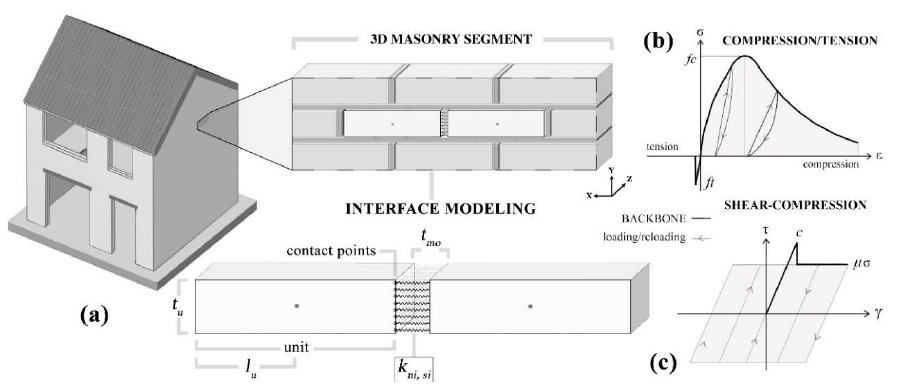Chiara Morandini, Daniele Malomo and Andrea Penna
Chiara Morandini, Ph.D. Student., University of Pavia, Pavia, Italy, chiara.morandini02@universitadipavia.it
Daniele Malomo, Assistant Professor, McGill University, Montréal, Canada, daniele.malomo@mcgill.ca
Andrea Penna, Associate Professor, University of Pavia, Pavia, Italy, andrea.penna@unipv.it
ABSTRACT
Equivalent-frame macro-models (i.e. EFM), widely employed by both researchers and practitioners for reproducing the in-plane governed response of unreinforced brick masonry
(URM) structures, typically represent an acceptable compromise between accuracy and computational cost. However, when considering URM systems with an irregular openings
distribution, the definition of the effective heights and lengths of deformable components (i.e. pier and spandrel elements) still represents an open challenge. In this work, a comprehensive study is undertaken with a view to investigate the influence of the irregular openings distribution on the numerically-predicted lateral behavior of full-scale URM façades. To this end, several geometrical combinations and various degrees of irregularity are considered and subsequently idealized according to various commonly-employed EFM discretization approaches. Then, after a preliminary calibration process using experimental tests on both single piers and a full-scale URM façade, EFM results are compared with micro-modeling predictions, carried out within the framework of the Applied Element Method (AEM), where damage propagation and failure mechanisms are explicitly represented. Although, in some cases, depending on the considered EFM mesh scheme, macro and micro-models converge to similar results, non-negligible differences in initial lateral stiffness, base-shear and damage distribution were observed. Thus, a careful selection of appropriate EFM schemes is needed when performing in-plane analyses of URM systems with irregular opening layouts.
KEYWORDS: unreinforced masonry; in-plane; irregular opening layouts; macro-modeling; Equivalent-Frame model; micro-modeling; Applied Element Method



